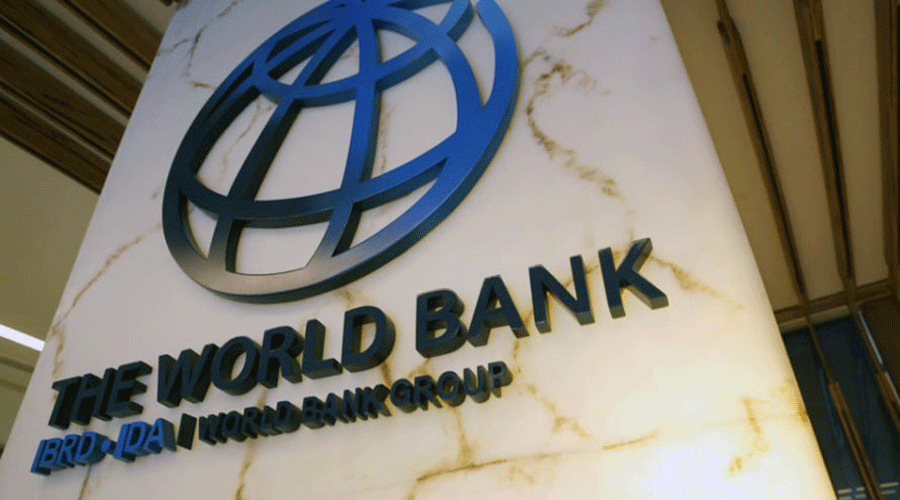CBL Reports Drop In Inflation Rate
 The general rate of inflation went a digit down falling from 7.7 percent in the second quarter to 6.7 percent during the third quarter of 2009, the Central Bank of Liberia or CBL said in its recently released quarterly report.
The general rate of inflation went a digit down falling from 7.7 percent in the second quarter to 6.7 percent during the third quarter of 2009, the Central Bank of Liberia or CBL said in its recently released quarterly report.
The third quarter runs from July to September.
“The sub-indices in the harmonized consumer price index (HCPI) recorded increases and decreases for some categories. The Food & Alcoholic Beverages subgroup showed a decline of 0.75 percent, followed by the Housing, Water, Electricity, Gas, & other Fuel, by 3.84, and the Transport, by 4.43 percent.” The bank reported.
It said, on the other hand, the other subindices that increased during the review quarter included the Restaurants & Hotels category, which rose by 97.4 percent, followed by the Household Equipment & Maintenance, by 30.1 percent; the Clothing & Footwear, by 20.9; the Miscellaneous Goods & Services, by 14.8 percent; the Recreation & Culture, by 4.84 percent; the Health, by 4.1 percent; and the Alcoholic, Tobacco, & Narcotics, by 19.2 percent.
The CBL reported that in the 12-month period to September 2009, the average rate of inflation reached a low of 6.7 percent, from a high of 22.6 percent in September of 2008. This was occasioned by declines in the prices of oil and food on the global market.
Crude oil price decreased from US$117.98 per barrel during the third quarter of 2008 to around US$68.00 per barrel at end-September, 2009. For the same period, prices of rice and maize fell from US$720.8 per ton to US$590.8 per ton and from US$241.2 per ton to US$164.7 per ton, respectively.
However, it said, lower single-digit inflation towards the end of 2009 would have depended depend largely on the prices of oil and food on the world market as they are now beginning to move upward. This is a source of potential risk to inflation in the domestic economy.
[bsa_pro_ad_space id=1]
“However, lower single-digit inflation towards the end of 2009 will depend largely on the prices of oil and food on the world market as they are now beginning to move upward. This is a source of potential risk to inflation in the domestic economy,” it said.
Local Banks Score High Marks
The performance of the banking industry here is said to be in a very strong position, as deposits base increased by 11.9 percent and gross loans rose by 12.6 percent, compared to the 2nd quarter of 2009. In its third quarterly report, the Central Bank of Liberia or CBL said there were also increases in total assets and total of the banks by 8.4 percent and 9.2 percent, respectively.
“Yearly comparison shows that total deposits, gross loans, total assets and total capital grew by 50.4 percent (or 48.9 percent excluding the new banks), 50.0 percent (46.9 percent excluding the new banks), 44.0 percent (or 36.1 percent excluding the new banks) and 105.3 percent (52.1 percent excluding the new banks), respectively,” the CBL reported.
The year-on-year growth in the capital, it said, can largely be attributed to the increase in the minimum capital requirement from US$2.0 million to US$6.0 million.
Overall, the growth rates reflect growing confidence in the banking sector and its ability to provide finances to support ongoing economic activities.
The industry’s Capital Adequacy Ratio (CAR), CBL went on, declined by 4.0 percentage points, from 33.0 percent during the previous quarter to 29.0 percent at end of the third quarter.
Nonperforming loans as a ratio of total loans in the industry improved slightly, from 14.6 percent during the previous quarter to 13.5 percent at the end of the reporting quarter. This was driven by a 12.6 percent increase in total loan portfolio. Compared with the third quarter of 2008, non-performing loans as a ratio of total loans, improved by 0.4 percentage points.
It said during the quarter, the industry recorded gross earnings of L$2,098.0 million and profit (before loan loss provisions and taxes) of L$566.3 million. Unlike the preceding quarter, the industry recorded a net income position. Non-interest income remains the major source of earnings for the sector, constituting 62.9 percent of earnings of the industry during the review quarter.
Net interest margin (NIM) for the industry increased from 3.0 percent at end-second quarter to 4.7 percent at end of the review quarter. This performance can be largely attributed to improved financial inter-mediation in the banking sector through increased lending activities. The return on assets (ROA) and return on equity (ROE) for the quarter under review were 0.2 percent and 1.1 percent, respectively.
The banking system continued to maintain a strong liquidity position. The industry recorded a liquidity ratio of 46.7 percent, which is above the minimum required liquidity ratio of 15 percent. The industry recorded total liquid assets of L$8,784.0 million, comprising L$2,094.0 million or 23.8 percent as vault cash, L$6,010.0 million or 68.4 percent as foreign bank balances and L$680.5 million or 7.8 percent as current account balances with the CBL.




















